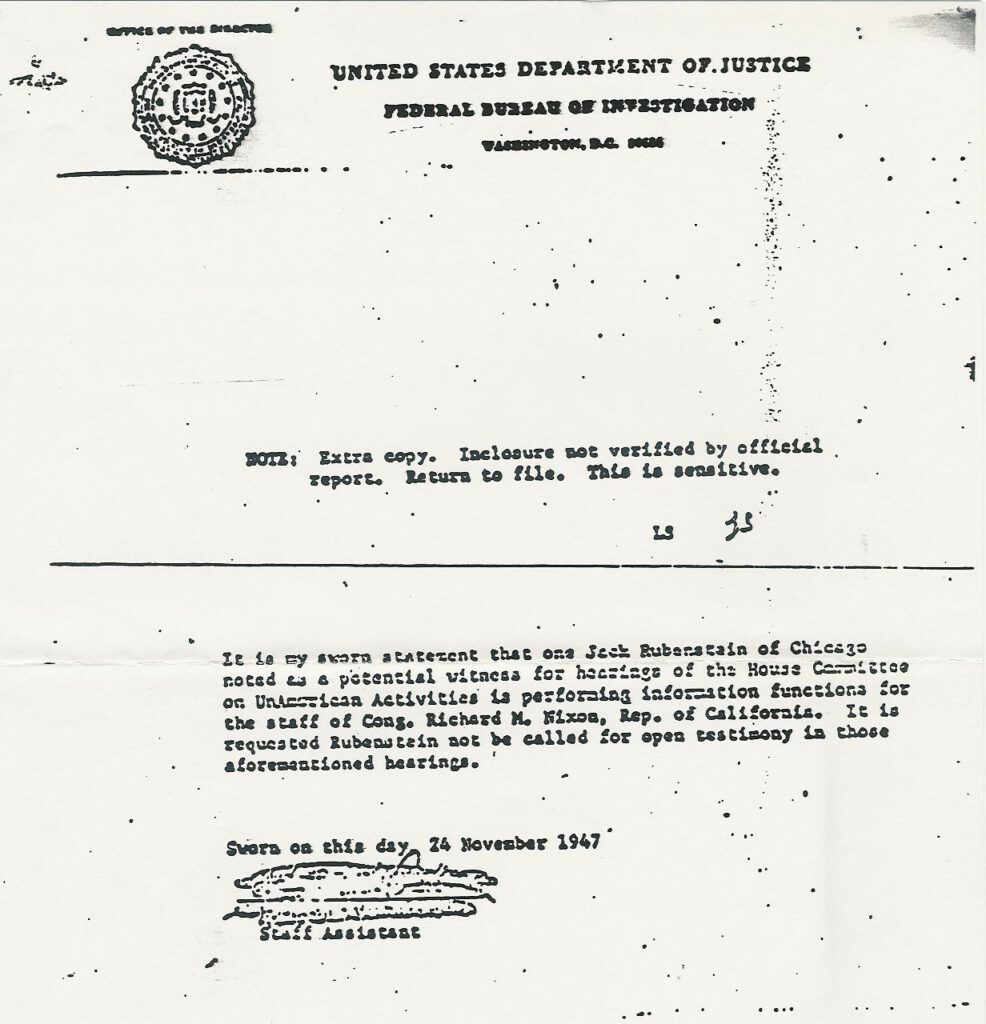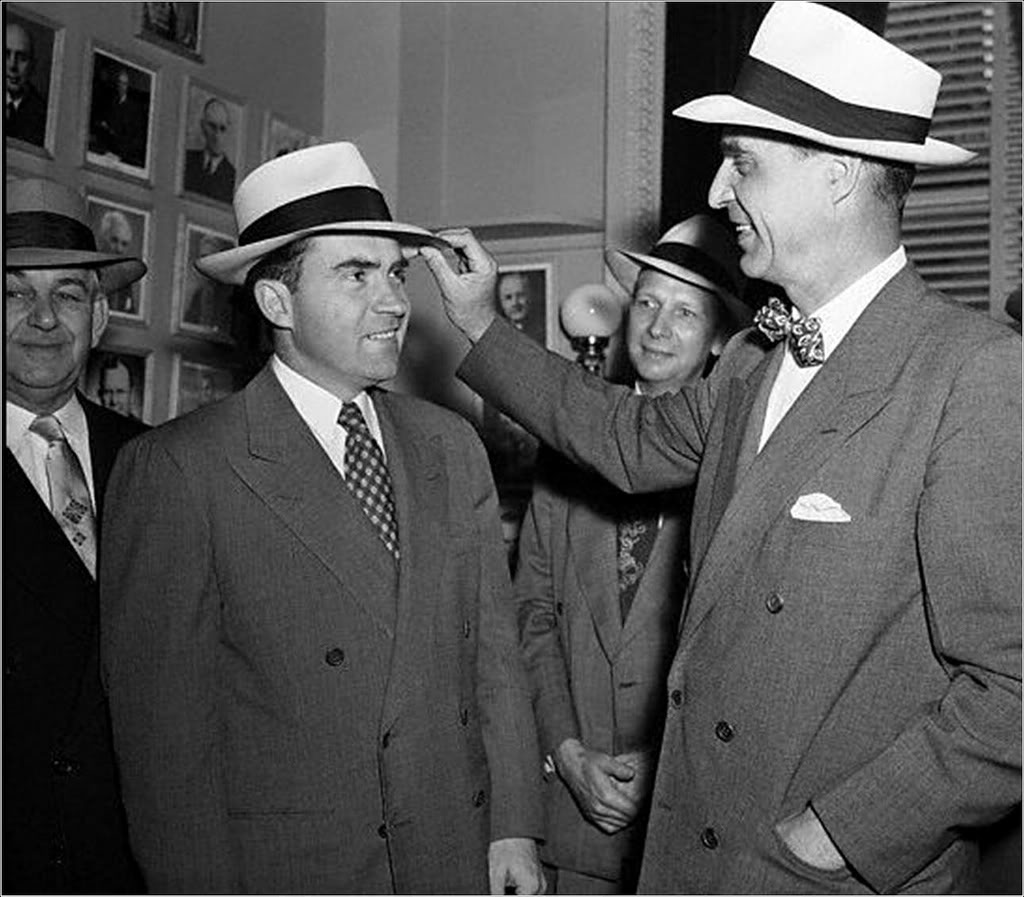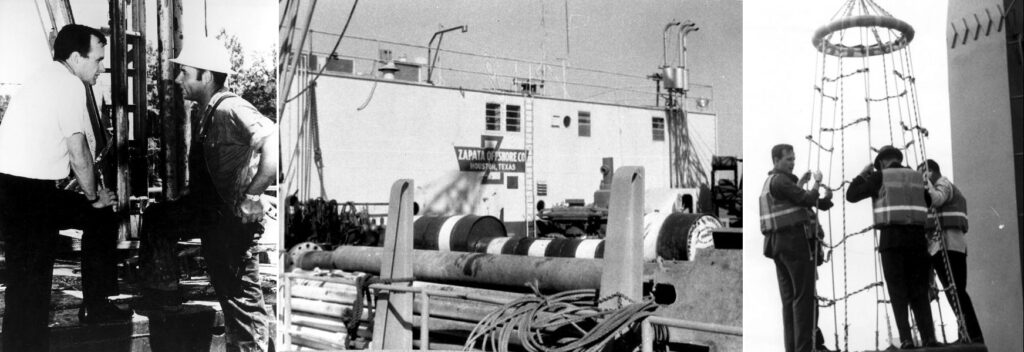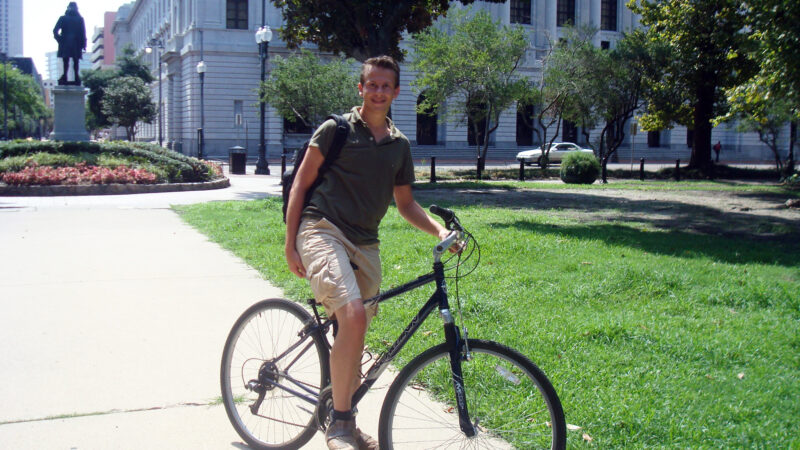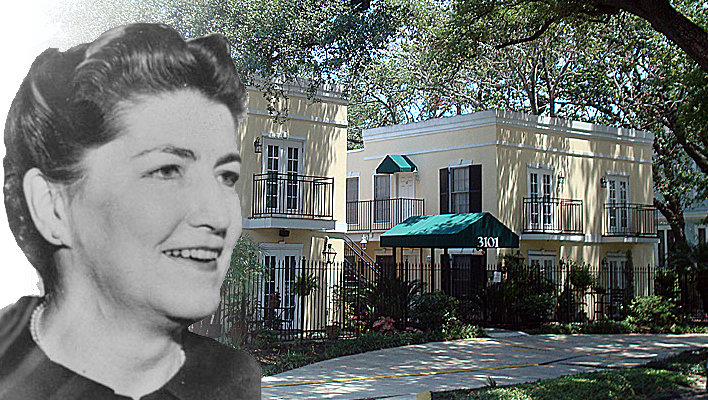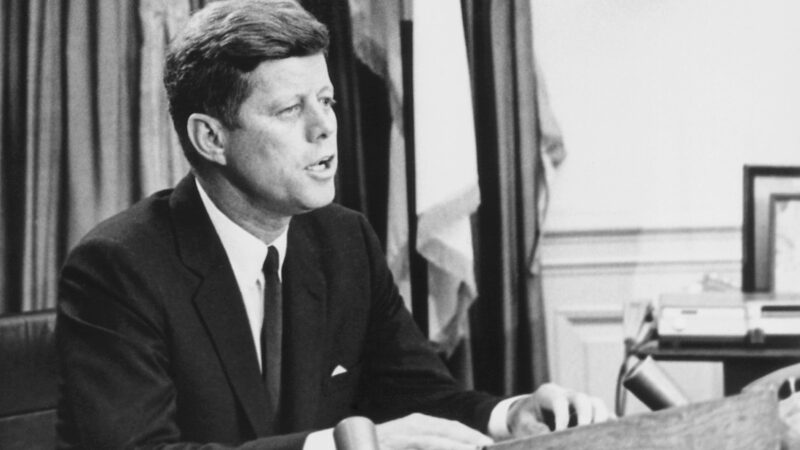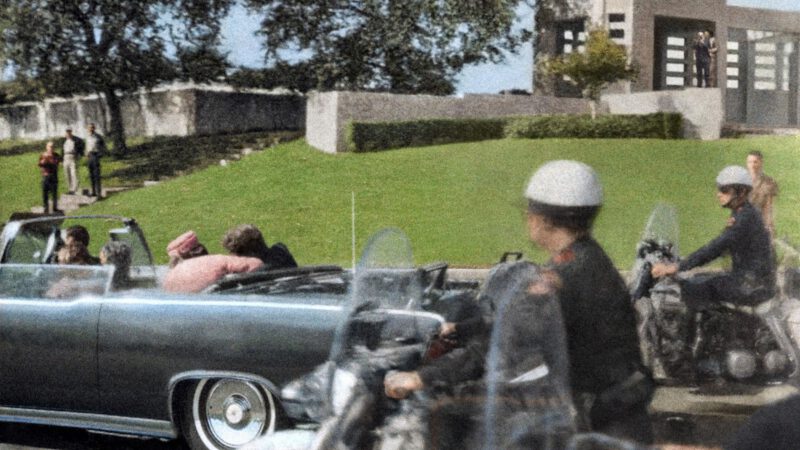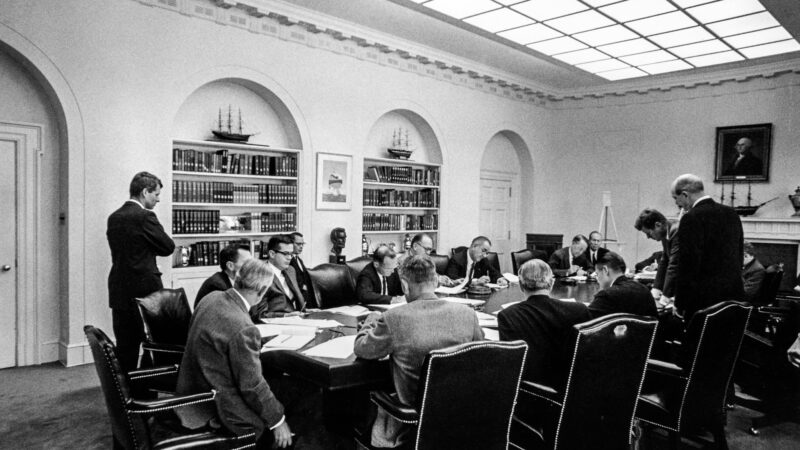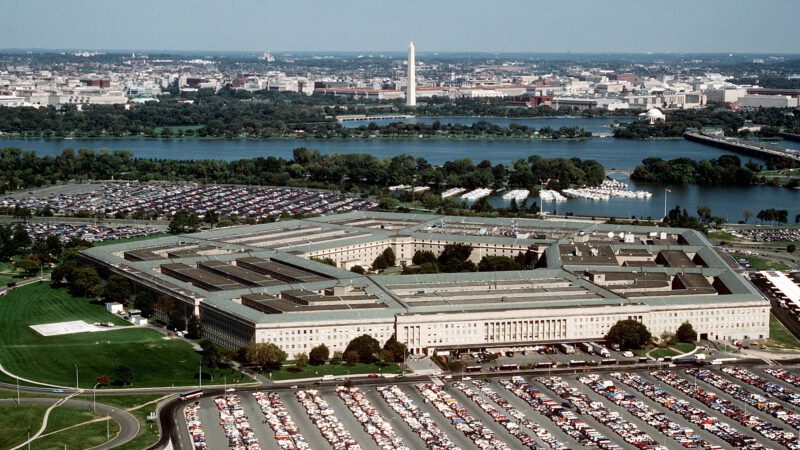The assassination and the Bush family

In my second book on the assassination of Kennedy (2012), I outlined the various theories, ranging from quite plausible to sometimes reasonably ridiculous. I also included a theory about the alleged involvement of members of the Bush family: Prescott and his son George HW, the later president. At the time, there was a fairly long documentary on YouTube, which served as a valuable source for my paragraphs on this aspect of the Kennedy assassination case. It was uploaded in 2010 and has since been removed from the platform. Thirteen years after my initial publication, I have translated my text. Read everything about the JFK assassination and the Bush family on this page.
The assassination and the Bush family
Prominent American investigative journalists like Peter Jennings declared on TV that there simply was no evidence of a conspiracy, even though there was indeed evidence – as also stated by government committees in the 1970s. According to researchers more skeptical than Jennings, the powerful individuals who ordered Kennedy’s assassination in 1963 seem to still be alive and powerful enough to silence reputable journalists. Jennings’ statements can be heard at the beginning of a film made by David Lanier in 2010 and posted on YouTube, titled JFK 2. A key figure in the film is an oil tycoon who would later become president: George H.W. Bush. The film was viewed over 32,000 times within a year. Lanier states: “The autopsy was a charade, and the magic bullet theory an even bigger farce. Security in Dallas was a joke. Kennedy’s murder must have been organized by a powerful individual or a powerful group of people. An enemy who even had access to the body of the murdered president. JFK was taken from the hospital in Dallas against all laws, and the lifeless body showed different wounds during the autopsy in the capital than those observed in Dallas. Something must have happened before landing in Washington DC. But why? And more importantly: by whom? In my view, the investigation into Kennedy’s murder was sabotaged by members of his own entourage, by high-ranking officials, men who were not directly guilty of the murder but certainly became accomplices through their behavior in the hours after the tragedy. They tampered with the body so that it could be made plausible that the man was shot from behind, five hours before the alleged shooter was officially charged with the murder. And the word ‘accomplice’ inherently implies a conspiracy. Coordinated by someone with a lot of power.”
Spotlight Magazine already had a story in the 1970s about the presence of CIA official E. Howard Hunt in Dallas on the day of Kennedy’s murder. Hunt, not related to oil baron H.L. Hunt, had been involved in dirty work for the CIA for years. He vehemently denied and provided five different alibis. On his deathbed in 2007, he suddenly confessed that he was indeed involved in the murder, along with colleague Frank Sturgis, among others. David Lanier makes connections: “Hunt is not the powerful man we are looking for as the coordinator of the conspiracy, but he can be easily linked to someone who had a lot to say. Hunt had a particularly good relationship with Richard Nixon.” Hunt later led the Watergate scandal of Nixon in 1973. He recruited team members for that job, many of whom he had gotten to know during the failed invasion of the Bay of Pigs in Cuba, like his old friend Sturgis. Was Nixon in any way involved in Kennedy’s murder? It was known that in the 1950s he frequently enjoyed American privileges in Havana, Cuba, and had various members of organized crime as acquaintances there…
Among Kennedy case researchers, an old FBI document from November 24, 1947, is well known (see photo). The document (there are skeptics who denounce the authenticity) states that a certain Jack Rubenstein from Chicago should be exempted from rigorous interrogations by a government committee because he regularly provided information to Congressman Richard Nixon. How coincidental is it that Oswald’s killer, who had by then changed his name to Jack Ruby, worked for Nixon years earlier? Richard Nixon was in Dallas on the day of the murder, although he initially denied it. Later, he said he had forgotten where he was exactly on the day of the murder – which seems quite unlikely. Everyone of a certain age remembers exactly where he was on that day. Like Hunt, Nixon had trouble with his memory. Nixon was good friends with politician John Connally, the Democratic governor of Texas at the time of Kennedy’s visit to the state in November 1963. Connally was the man who briefly served as Secretary of the Navy under JFK and later as Secretary of the Treasury under Nixon – the man who was in the seat in front of the president during the ride through Dallas. Like Nixon, Connally is not spared in several theories.
But Nixon was not really powerful in 1963. He lost the presidential elections in 1960 and two years later also lost the election for the governorship of California. He would disappear from politics until 1968. To make it clear who was much more powerful in 1963, David Lanier delves into history in his film.
Prescott Bush
The most powerful families in America in the 1930s and 1940s were not exactly angels. Families like the Fords, the Harrimans, the Du Ponts, and the Rockefellers all invested money in Hitler’s Nazi party. They helped the Germans with essential things like gas and rubber and were not opposed to Hitler’s ideas. Researchers in the United States called them Nazi-Americans, because without the help of these families, Hitler could never have waged his war. J. Edgar Hoover, the FBI director who seemed to have a file on every American, knew everything. He investigated the alleged Nazi connections of Union Bank in New York. The FBI did indeed find a connection with German businessman Fritz Thyssen, Hitler’s most famous financier. On July 31, 1941, the New York Herald Tribune headlined in large letters: ‘Union Banking Corporation may hide nest egg for top Nazis.’ On October 20, 1942, the Roosevelt government seized all shares of the Union Banking Corporation, including those of the director at that time, Prescott Sheldon Bush (May 15, 1895), father and grandfather of the future presidents of the United States, descendant of men who were slave owners and racists. The government simply established that Bush’s bank was doing business with an enemy nation, and Bush was charged as a collaborator. Hoover would never forget how wrong the Bush family was in the war. Former prosecutor John Loftus in 2002: ‘If Prescott Bush was still alive, I would want to prosecute him for giving aid and support to the enemy during wartime.’
Prescott Bush ran the bank together with his business partner W. Averell Harriman. The duo worked together on various fronts. Since 1931, they were also partners at Brown Brothers Harriman & Co, a private bank. When CIA agent and self-proclaimed conspirator in the Kennedy assassination E. Howard Hunt worked in Europe in the years after the war, he reported daily to this Averell Harriman. Since then, Bush and Hunt also knew each other.
Immediately after the war, Precott Bush began to invest all his energy in a political talent: Richard Nixon, then a young congressman from California, born in 1913. The same Nixon who, according to the mentioned FBI document, a year later used Jack Ruby as an informant and who, as president, would hire questionable individuals like E. Howard Hunt for dirty business. From the very beginning, Nixon, the son of a greengrocer, was made and sponsored by his mentor (both are in the photo). While Prescott Bush slowly built his own political career in the years after the war and entered the Senate as a Republican for the state of Connecticut in November 1952, Nixon grew with him. The political winds were favorable to the Republicans. For the first time in twenty years, Dwight D. Eisenhower, a good acquaintance of Prescott Bush, became a Republican president in the White House. Senator Richard Nixon became vice president. In 1960, he could have advanced to the presidency after Eisenhower, although the latter later was not particularly enthusiastic: ‘At what important decisions was he involved? Give me a week, and then maybe I can think of one.’ Prescott and his wife traveled around promoting Nixon and simultaneously criticizing Kennedy, the Democratic candidate in 1960. Dorothy Bush: ‘John F. Kennedy is an ambitious man who has neglected his work in the Senate. It is frightening to realize that a wealthy man can seek office and buy it for himself.’ It would undoubtedly have shocked Dorothy if she had heard that during the presidential campaign of 2000, exactly the same thing was said about her grandson.
The campaigns did not help; in the end, Kennedy took the win. Prescott Bush sent flattering, comforting words to Nixon. He retired in 1962 – on his sixty-seventh birthday and after almost ten years in the Senate. A consolation prize followed that same year when he, along with John F. Kennedy, received an honorary doctorate at his beloved Yale.
George Herbert Walker Bush
Prescott Bush married Dorothy in 1921, the daughter of a certain George Herbert Walker. Bush and his father-in-law Walker shared various business interests and also held similar right-wing ideas. Walker was a notorious racist, a precursor when it came to eugenics: the scientific study of improving a race.
Between 1922 and 1938, Prescott and Dorothy had five children, with the second one making the most name. George Herbert Walker Bush was born on June 12, 1924. He flew in World War II and then, like his father and other ancestors, studied at Yale University in Connecticut. Before becoming the President of the United States in 1989, he served briefly as the Director of the CIA from 1976.
In 1977, an important FBI document was released, discovered by researchers only in 1992 (see photo). On November 29, 1963, J. Edgar Hoover wrote that there were Cubans who feared they would be blamed for Kennedy’s murder, and actions might be organized by anti-Castro Cubans to avenge that murder. Pro-Castro Cubans informed the FBI that they were afraid the tragedy in Dallas could have unpleasant consequences for them. Escalation should absolutely be avoided. Hoover states in the document: ‘This message was forwarded to George Bush of the CIA on November 23 by the Bureau.’ Why is this document so important? Because the son of Prescott Bush always denied having a CIA past before becoming the director in 1976. Why did he lie? His role within the CIA was evidently quite significant. According to the document, he had a supervisory role over the large group of anti-Castro Cubans in the country. Bush said in 1992, when confronted with the FBI document: ‘It must be another George Bush.’
Filmmaker David Lanier: ‘Of course it was about our former president. The CIA at that time was a clique of people who had known each other for years and trusted each other. Pure cronyism, as always. CIA Director Allen Dulles, for example, who was fired by Kennedy after the Bay of Pigs invasion, had previously been involved as a lawyer in Prescott Bush’s case when his Union Bank was designated as a German bank. In the 1930s and 1940s, Dulles did a lot of business with both Bush and Averell Harriman. All these guys knew each other and covered each other’s backs. Men like Prescott Bush and Allen Dulles were involved in the forerunners of the CIA during World War I. Richard Bissell, the deputy director of the CIA’s Secret Operations division, who was later also fired by Kennedy, worked for Averell Harriman for ten years before his CIA career, just like E. Howard Hunt. The Bush family had known Bissell for years. The CIA was not so much an organization later on; it was more of a community. A network of old friends.’ (More on Dulles and Bissell here.)
There is more evidence that Hoover’s document did indeed refer to ‘our’ George Herbert Walker Bush.
When Kennedy, after the failed Bay of Pigs invasion, announced that he wanted to thoroughly reorganize the CIA and dismantle its main tasks, Prescott Bush took action. Except for Prescott’s only daughter Nancy, who occasionally encountered Kennedy in private, the whole family was furious. With a few business associates, including the future corrupt CIA director William Casey, Prescott founded the National Strategy Information Center in 1962 to prevent Kennedy from getting his way. They gathered powerful people around them to oppose the president’s plans. The Bush family was apparently very involved with the CIA.
But the evidence goes further. George H.W. Bush was a prominent member of the Skull and Bones organization, a secret society of students at Yale University. His grandfather George Herbert Walker, his father Prescott Bush, and Averell Harriman also met twice a week in the temple of the infamous society on the Yale grounds. Robert A. Lovett was also a member, one of the architects of the CIA, former business partner of Bush at Brown Brothers Harriman and Secretary of Defense under President Harry Truman. So was Frederick Trubee Davison, chosen in 1918 by Prescott Bush to become a Skull and Bone and responsible for hiring new CIA officials in 1948. That was the year when George H.W. Bush finished at Yale University. Son Endicott Peabody Davison was in the same class of the society as young George H.W. Bush, and this Davison would later serve as a lawyer for the Bush family. In short, members of the society were men who entered close business relationships with each other and remained loyal to each other throughout their lives. Kitty Kelley writes in her book The Family: The Real Story of the Bush Dynasty: ‘George had worked his tail off for membership in the society. He was asked on May 15, 1947, by Charles S. Whitehouse, who would later also have a career at the Central Intelligence Agency. The intelligence service attracted such a high percentage of Bonesmen, good at keeping secrets, that members of the Skull and Bones called the CIA our headquarters.’

There is another connection between George H.W. Bush and the CIA. After Yale, he worked for oil magnate Neil Mallon, a Skull and Bones member of the same generation as his father Prescott, Trubee Davison, and Averell Harriman. Mallon, who introduced George Bush to the oil industry and taught him the tricks of the trade as a mentor, was important to the Bush family. Senator Prescott Bush wrote on March 26, 1953, praising an employee of the White House: ‘Neil Mallon is an old and very dear friend. He is a good acquaintance of Allen Dulles and has been of value to him and the CIA several times, especially when it comes to recruiting good staff for this important intelligence service.’ This Mallon was evidently so important to George H.W. Bush that he named his third son Neil Mallon Bush – the younger brother of the future President George W. Bush (the little boy on the family picture) and the future governor of Florida, Jeb Bush. Neil Mallon wrote in a letter to CIA director Allen Dulles on April 10, 1953: ‘I have invited a good friend, Prescott Bush. We want to talk to him about our project in the Caribbean region, and we want you to be there too.’ The meeting took place shortly afterward at the Carlton Hotel in the capital. The Caribbean region meant Cuba, during the 1950s an increasingly growing problem for the U.S. government. It cannot be a coincidence that the name of Prescott’s son later appears in Hoover’s document as the man directing groups of anti-Castro Cubans.
Zapata: a Company and a Covert Operation
After a learning period at the company of Neil Mallon, Dresser Industries, George H.W. Bush started his own business in 1953 with some associates: Zapata Oil. According to an internal CIA memo dated November 29, 1975, Zapata Oil was founded in 1953 through a joint effort by Bush, Bill Liedtke, and Thomas J. Devine, another high-ranking CIA official. Devine, who would accompany Bush on his 1967 trip to Vietnam and act as his informal advisor throughout his career, formed another lifelong, valuable friendship combining business and intelligence. Bush then established a subsidiary, Zapata Off-Shore Company, in 1954, becoming its sole shareholder. The headquarters were in Midland, Texas, and almost all members of his Skull and Bones class bought shares. Business was booming, prompting the company’s move to Houston, the state capital, in 1959. The Bush family occupied a luxurious home on half an acre, built according to their instructions under discriminatory regulations. The ordinance stated, ‘No part of the property in said codicil shall ever be sold, leased, rented to or occupied by any person other than of the white race, excepting the staff quarters.’
Zapata’s drilling rigs were located in various places in the Caribbean, such as the Gulf of Mexico and a location 64 kilometers north of Cuba, near the Bahamian island of Cay Sal. From 1957, this island was used by the CIA as a base for attacks on Cuba. E. Howard Hunt utilized this location for coordinating secret projects like Operation Mongoose, Operation 40, and Alpha 66. George Bush had become a significant businessman with considerable interests – precisely in the area where important CIA projects were taking place. Coincidence? And is it also a coincidence that the CIA’s codename for the Bay of Pigs invasion was Operation Zapata? Filmmaker Lanier: ‘You have to be an idiot to give the secret invasion the same name as your company. But George Bush was such an idiot. In World War II, he named his plane Barbara II, after his wife. When the plane was shot down, he named his new plane Barbara III. When the CIA transported weapons, tanks, and Cuban exiles in preparation for the Bay of Pigs invasion, they used a ship of the U.S. Navy. It couldn’t be recognized as a naval ship, so it got a new coat of paint and a new name: The Barbara. The Barbara was then used in Operation Zapata. And do we still believe that George Herbert Walker Bush was not involved? In my opinion, Bush is the cog in the wheel, who carried out his own activities in the area above Cuba, at the time when E. Howard Hunt also headed in that direction for the CIA and when Richard Bissell left Averell Harriman’s offices to become the director of intelligence at the CIA. George H.W. Bush was informed by Hoover about Cuban activities shortly after Kennedy’s assassination. He had become an important man.’
Bush, like most people around him, could be considered extremely conservative. He was a fierce opponent of the Civil Rights Act, and many believed that Bush belonged to the same camp as the segregationists, advocates of racial segregation. In this ultra-conservative part of America, George H.W. Bush developed his political ambitions in the early sixties. Encouraged by his father Prescott, he became the Republican chairman of a small area in Texas in 1962. He wanted to run for the Senate seat of that state in 1964. Topics that regularly appeared in the 1963 campaign were the prevention of voting rights for poor blacks and the disgust towards the Kennedys. During the election campaign, Bush was supported by Dwight Eisenhower and Richard Nixon, among others.
However, it all seemed to be in vain. In 1964, Bush lost the Senate elections to Ralph Yarborough, and later, in 1970, he lost again in a race for the same office. It seemed like his political ambitions were over quickly. Fortunately, Bush had his friend Nixon. The new president, elected in 1968 when both John and Robert Kennedy were no longer alive, could now do something in return for the son of his former mentor Prescott. According to Harry R. Haldeman, White House Chief of Staff under Nixon, everyone was surprised and bewildered when Nixon came up with John Connally at the end of 1970 as the new Secretary of the Treasury. No one understood what this Democrat from Texas was doing in the Republican-tinted White House. In any case, Connally wanted to accept the position, but with one condition. If he came to Washington DC, Nixon also had to find a good position for Bush. Connally believed that Bush deserved it because he had campaigned so hard for Nixon while Connally had done the same for the competitor, Democrat Hubert Humphrey. Bypassing Bush in favor of Connally would create an embarrassing situation. Nixon then brought Bush into the White House by appointing him as the ambassador to the United Nations. John Connally and the president had saved Bush’s career. In exactly the same period, E. Howard Hunt also started working for Nixon, the man who would later be arrested in the Watergate scandal. No one knew Hunt in the White House except Bush. David Lanier in his film: ‘Connally, Bush, and Hunt. In 1970, they all came to Washington DC. There are no real similarities between the gentlemen until you take a closer look. They all encountered each other on their way to success. Hunt was involved in carrying out the murder of Kennedy. Behind the scenes, Bush pulled the strings of the CIA. And Connally? As governor of Texas, he made important decisions for that day, such as precautions for the security of the president. I don’t believe in coincidences: there was more going on here.’
Nixon spoke on June 23, 1972, just five days after the Nixon burglars were arrested in the Watergate complex, with a close aide about the arrested Hunt: ‘That man knows a lot. Maybe too much. If you open that can of worms, a lot will come out. That would not be good for the CIA, not good for us, not good for the whole country. It would make the whole Bay of Pigs incident relevant again. We must make sure he keeps quiet.’ Researchers have spent many hours trying to figure out what the president meant by those words. What was so sensational that it had to remain a big secret, and what did it have to do with the Bay of Pigs? There are authors who believe that Nixon, in agreed-upon language, was talking about the murder of Kennedy. It remains speculation. After the Watergate scandal, Hunt ended up in prison. He demanded two million dollars in cash from the resigned President Nixon and blackmailed him: if he didn’t get his money, he would talk. Nixon apparently became scared: Hunt got what he asked for, and the money came from businessman Bill Liedtke, George H.W. Bush’s business partner. Investigator Dan E. Moldea interviewed a high official from the Department of Justice in the years after the Nixon era. ‘The whole thing is too bizarre to think about. This is the president of the United States. Respected politicians. And these people deal with criminals in this way, after spending millions to get them behind bars? Nixon had been in contact with these kinds of people since the beginning of his political career, in the forties. I find it especially regrettable that we will never know the whole truth. It will never come out.’
Nixon didn’t care. He had been responsible for appointing Gerald Ford as vice president, the man who succeeded him as president in August 1974 after his resignation, and the man who had also been part of the Warren Commission ten years earlier. One of Ford’s first actions was to grant Nixon a pardon. A thorough investigation would never take place again.
The Cover-Up
In 1976, the House Select Committee on Assassinations initiated an investigation into the CIA’s role in the Kennedy assassination. The involvement of CIA operative E. Howard Hunt was scrutinized, and CIA Director William Colby confirmed that Hunt was in Dallas but likely took orders from higher authorities. Perhaps from Dulles or the Rockefellers. Before the talkative Colby could become a more significant threat, he was relieved of his position. President Gerald Ford, a former member of the Warren Commission, appointed none other than George H.W. Bush as the new director of the intelligence agency. Bush, with his credentials, clear alibi, network, and capabilities, was the best person to deflect the critical committee’s questions. He ensured that the CIA immediately ceased all cooperation with the committee, effectively making a thorough investigation impossible. His old friend Ted Shackley, a Bay of Pigs veteran, became the new deputy director of the Department of Secret Operations.
According to various researchers, the name George H.W. Bush is connected in multiple ways to every aspect of the murder: planning, execution, and creating the smokescreen after the president’s death. No one had more credentials than he did: the necessary powers, a clear alibi, a network, and the means. After all the presented evidence, according to some researchers, it’s impossible to think that Bush was not involved in Kennedy’s assassination.
David Lanier’s film shows more. What about the powerful media tycoons with ties to the CIA and the Bush family, who concealed the famous Zapruder film for years and lied about it to the American public? What about a hitman like Orlando Bosch, whom Bush pardoned as president in 1990, despite Bosch’s long prison sentence, and who, according to some researchers and insiders, was present at Dealey Plaza in November 1963? And how should we interpret the friendship between Lee Harvey Oswald and George De Mohrenschildt, the businessman/geologist who later turned out to work for the CIA? In De Mohrenschildt’s address book, a card was found with George Bush’s name and address. Even his nickname ‘Poppy’ was listed, above the company name Zapata Petroleum. The two already knew each other from before World War II when De Mohrenschildt worked for Humble Oil, a company of Bush. They were both members of the Dallas Petroleum Club, just like high CIA official David Atlee Phillips, who was earlier linked to Lee Harvey Oswald in the address book. Later, another letter surfaced, written by De Mohrenschildt to Bush a few months before his death. De Mohrenschildt ended the letter with ‘We will vote for you if you ever want to become president. Your old friend G. De Mohrenschildt.’ Overall, a relevant connection, but Bush remained silent about it to the Warren Commission and in all subsequent interrogations. That, in itself, is remarkable and suspicious. (More on De Mohrenschildt in this article.)

Besides Hoover’s letter mentioning George Bush, there is another FBI document related to Bush (see photo). In this document, FBI employee Graham W. Kitchel reports on the day of Kennedy’s murder that, at 1:45 pm, a certain George H.W. Bush from Zapata Off-Shore Drilling Company called the FBI office in Houston. Kitchel stated, ‘His name was to be kept confidential, but he wanted to pass on rumors he had heard in the last few days […] He stated that one James Milton Parrott had been talking of killing the president if he came to Houston.’ Kitchel ends his memorandum by stating that Bush was on his way to Dallas and would stay overnight at the Sheraton-Dallas Hotel. Parrott was questioned by the FBI but denied everything. Bush was surprised when he saw the document years later. He couldn’t remember the call to the FBI. Like Hunt and Nixon, he didn’t even know exactly where he was that day: ‘…somewhere in Texas.’ Was Bush at Dealey Plaza? Many researchers say yes. There is a photo circulating on the internet of a man in front of the schoolbook depository, who could have been his twin brother. However, in the book The Family: The Real Story of the Bush Dynasty, Kitty Kelley writes that Bush was giving a speech in the city of Tyler at the crucial moment, about 150 kilometers from Dallas. Aubrey Irby was present at that event: ‘Bush immediately stopped his speech. I found that generous. Kennedy was immensely popular, but his views were completely opposite to those of Bush in every area.’ The meeting was adjourned, and Bush and his wife Barbara flew directly to Dallas – but not before Bush made the infamous call to the FBI in Houston. Interestingly, the same James Parrott accused by Bush in 1963 worked alongside Bush in 1992 during the ill-fated election campaign against Bill Clinton.
A letter from Prescott Bush to Mrs. Clover Dulles, written shortly after the death of her husband Allen Dulles in 1968, reveals much about how John F. Kennedy was perceived. ‘I remember that we invited Allen for dinner in the summer of 1961; you were out of town yourself, and he accepted our invitation. He introduced us on that occasion to John McCone, his successor as director of the CIA. We heard at that time that Allen had to step down. He tried to make it a pleasant evening, but I was sick about it. And angry too because it was the Kennedys who had caused the fiasco in the Bay of Pigs. They made a scapegoat out of Allen, which he was not and did not deserve. I have never forgiven the Kennedys.’
A man like E. Howard Hunt had committed several political murders for the CIA: the assassination of Kennedy would have been routine for him. Did he, along with men like Nixon, Connally, and Bush, really have anything to do with Kennedy’s death? The fear of laws with unfavorable financial and tax consequences might have compelled the powerful oil industry and their business partners to take action. They knew one thing for sure: after John F. Kennedy, a man was ready to take over the office. A Texan with whom business could be done. For fifty years, speculation has abounded about the possible involvement of Democrat Lyndon B. Johnson, the thirty-sixth president of the United States. More on that another time.
Far-fetched, complex, it all seems a bit like incredible conspiracy theories about a powerful elite pulling the strings worldwide. But what an interesting story with countless coincidences. The assassination and the Bush family: are they connected in some way? You decide.

